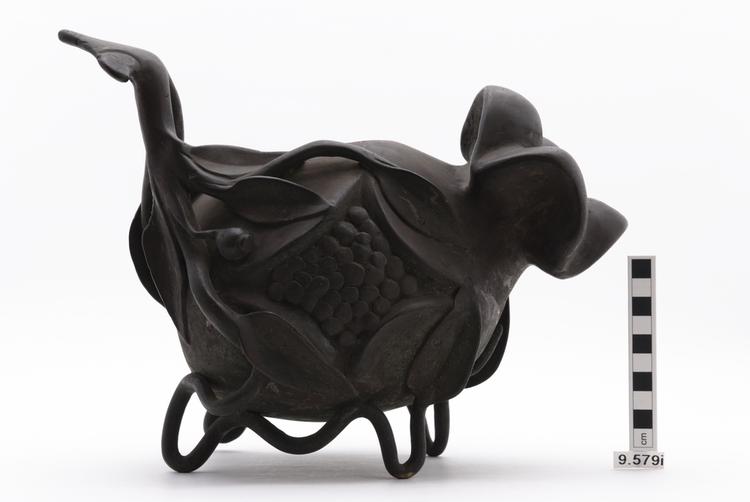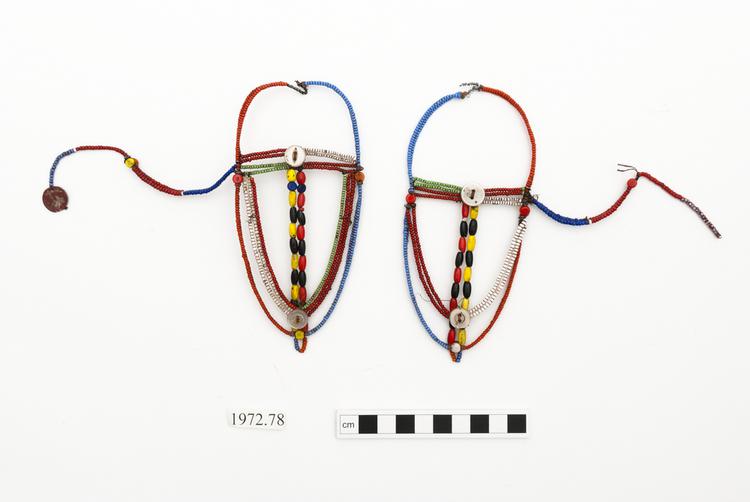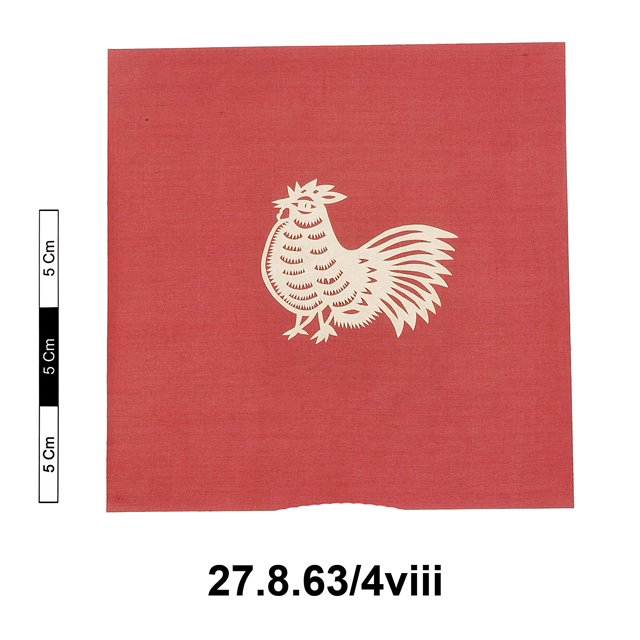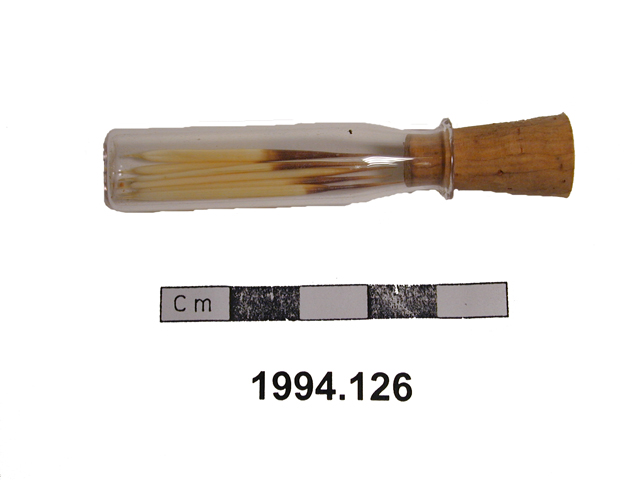
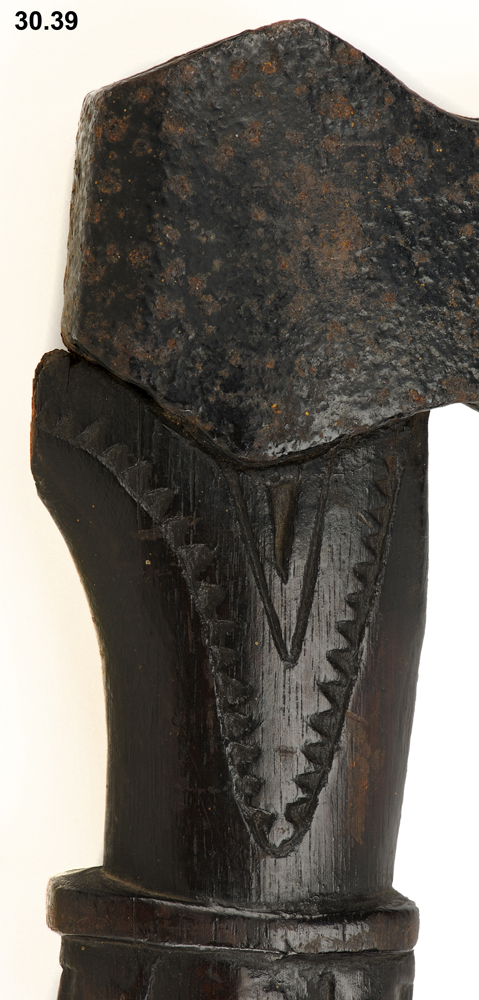
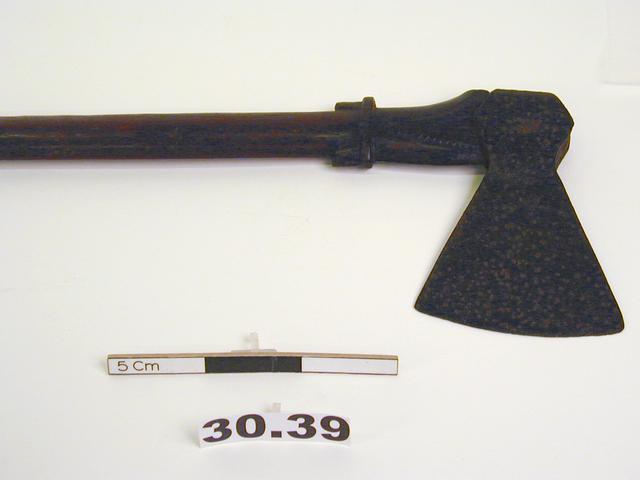
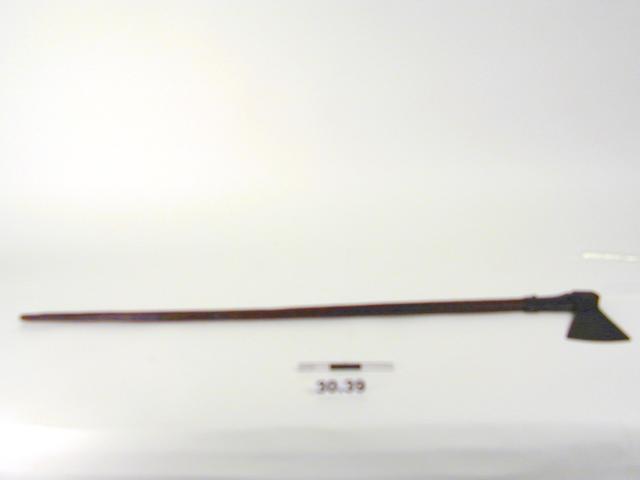
Axe with wooden shaft tapering towards bottom end and top end decorated with carved design. Triangular iron trade blade with curved edge and hexagonal shaped socket.
Iron War Axe, Western Europe & Solomon Islands, Central Melanesia Iron axe blades of this kind were small and cheaply made objects occupying little cargo space in the holds of the European and North American ships that brought them into the western Pacific. For the peoples of the Solomon Islands, they represented a completely new level of sharpness and durability in cutting technology. As a result, they quickly became immensely valuable. Chiefs that had established relationships with Westerners gained a major economic advantage over their neighbours, and some men quickly found ways to convert that economic advantage into political power by marriage and waging wars. In these wars, those forces armed with iron weapons were at a distinct advantage. In the early decades of western expansion into the Pacific, it was often only the Christian missionaries who maintained a permanent Western presence in the islands, and many of them relied on supplying items of Western technology as a means to get their hosts to hear their evangelical message. Ironically, they had come to bring a long-term message of peace, but the Western introduction of metal tools and weapons often resulted in a short-term escalation of violence. Iron, wood. Late 19th Century. Collected by Admiral E. H. M. Davies during the period 1890-1893 when he was captain of HMS Royalist.
fighting



